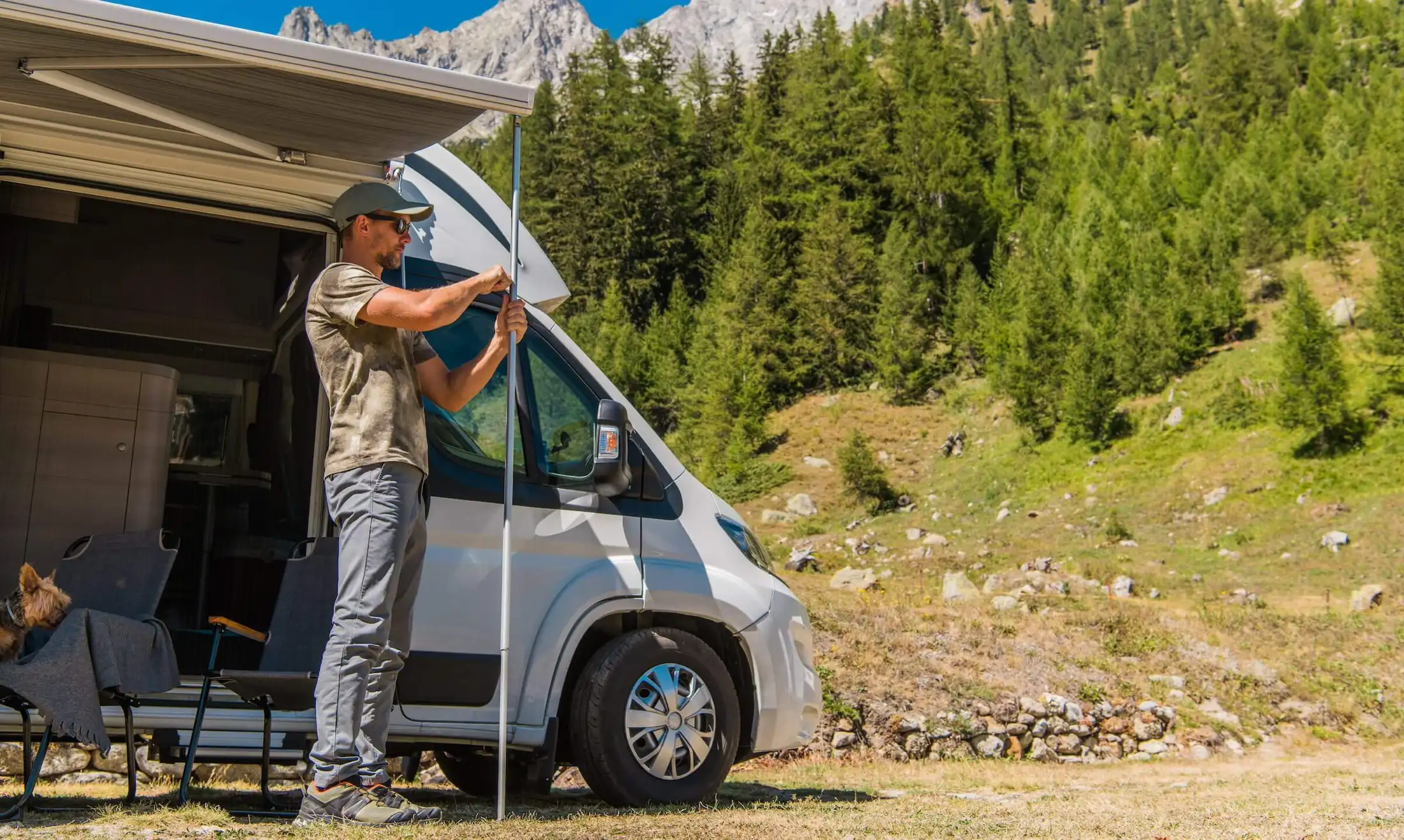It’s not difficult to set up an RV or trailer at a campground. Many RVers make a wide variety of easily avoidable mistakes though that can actually result in unnecessary additional costs for repairs and replacements. To help this not be you, we’ve put together a list of some of these all too common mistakes people make during the setup process.
AVOIDING WATER FILTERS
Campgrounds don’t necessarily have good water. You’ll absolutely need a good water filter for a safe connection. This will clean all the water prior to it entering your RV. Even better, water filters are inexpensive so this necessity won’t cost you much. You’ll then have the peace of mind of knowing all the water you’re using is genuinely clean.
LEAVING YOUR REFRIGERATOR OFF WHILE TRAVELING
Refrigerators take a longer time to cool than you may think. It could take six to eight hours so plan accordingly. If you can’t keep it on while driving, there are other ways to get to the temperature you need. Keeping the refrigerator on for whole night before is one option. Another option would be to use ice packs inside the refrigerator. It’s very important to note though you can’t run a refrigerator when driving if it operates on propane. That’s extremely dangerous. If that’s the type you have, always be sure to use alternatives to keep it cool during travel time.
LEVELING PROPERLY
You may think you’re on a completely level piece of land. The reality is that’s hardly ever going to completely be the case. No matter how flat it seems, take the time to level the RV yourself too. Not doing so could easily result in a rocking or shaking RV, which will make getting any quality sleep a challenge and create an overall safety hazard. You also risk damage to your refrigerator, appliances, and air conditioning. You’ll find more modern and higher end RVs have automatic hydraulic levels. Other RVs as well as trailers need to be leveled using blocks and pads. Some RVs also have stabilizers that can be used. All of this may seem like a lot of work, but it really isn’t. As you get into more of a routine, this will be one of your quicker tasks.
NO CHECKLIST
Having a checklist is an absolute must for all RVers regardless of your level of experience. There are so many things that can go wrong without one. Let’s be honest. The RV setup isn’t fun. It can be tiring. Your mind is understandably on getting the trip started, but this isn’t something you’re going to want to just go through the motions on. The reality is what may take more time than you want early on will eventually become second nature where you’re only taking 10 to 15 minutes to do it all. Trust us, this will always be time well spent.
NOT USING A SURGE PROTECTOR
All RVers should absolutely make sure to have a surge protector to prevent your RV from encountering electrical damage that can prove to be extremely costly. Not all campgrounds are necessarily prone to voltage spikes, but there’s no point in risking it. Even if they aren’t, thunderstorms can do the same. A surge protector will save you from having anything happen to your RV when this inevitably happens. When you’re first setting up, make sure your surge protector indicates power at the campground is usable. Each surge protector is different, but green lights will typically indicate good power. It doesn’t necessarily take high spikes or fluctuations to create damage to sensitive electronic appliances. Your laptop of TV could even be affected. A surge protector coming in between will protect any of this from happening.
RIGHT CAMPING SPOT
This is easily the first mistake a lot of RVers make. The start itself can go wrong where things could only continue to spiral from there. Before choosing your campsite, look into the proximity of the water connection, sewer hookup, and electricity. These will need to be close by. The hoses you have may fall short, which is obviously problematic. You should also make sure there aren’t any trees with branches that’d come over the top of your RV. Storms or high winds could cause that to fall on your RV potentially resulting in significant damage. Parking in the shade can sure be nice during hotter months, but you need to think about the ensuing risks. Your campsite must also be on as level of ground as possible. Check out how hard the surface is too. Should you not be utilizing shore power, it’s also important to ensure you have the space necessary to place a generator for your power needs. These oftentimes come with a certain level of noise though so place it on the other side of your sleeping quarters to ensure you’re still able to get quality sleep. Lastly, give yourself plenty of space so you’re not encroaching on other campers. You’ll want your space, and they’ll appreciate the distance you’ve left too.
SHORT AND INFLEXIBLE HOSES
Your water connection can be anywhere around the RV so it’s important to have a long enough hose. You also don’t want your hose being hard because it may break from all the ensuing twists and turns. You’re going to want to have a quality hose that’s flexible and won’t block water when bending. The same goes for the rest of the hoses you’ll be using.
